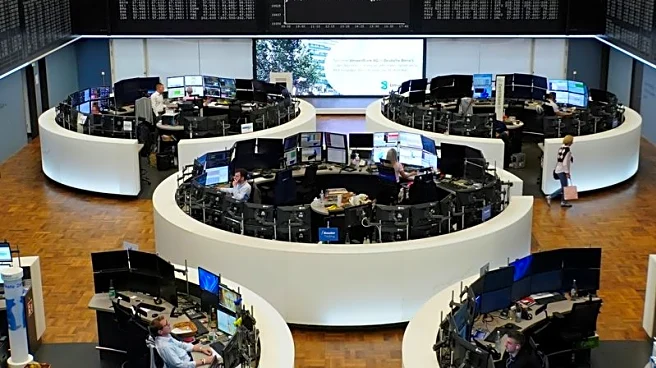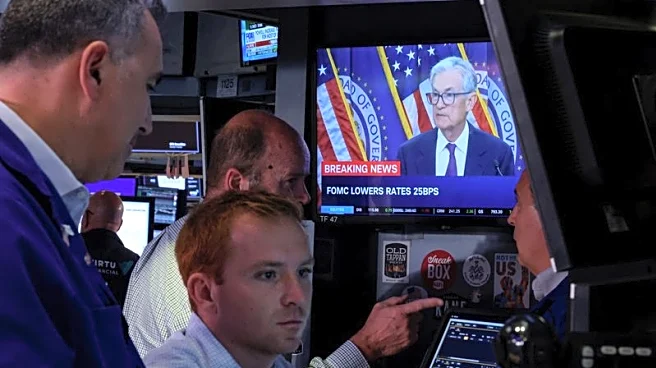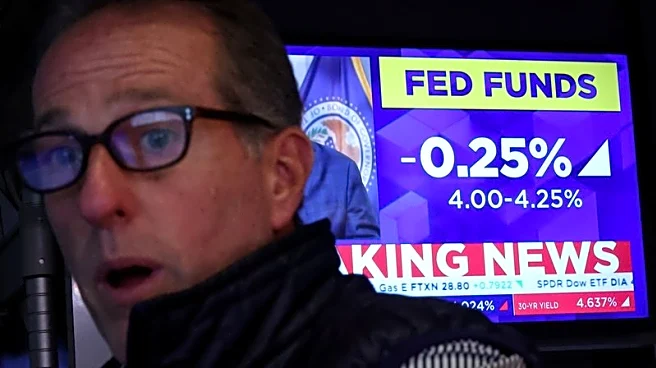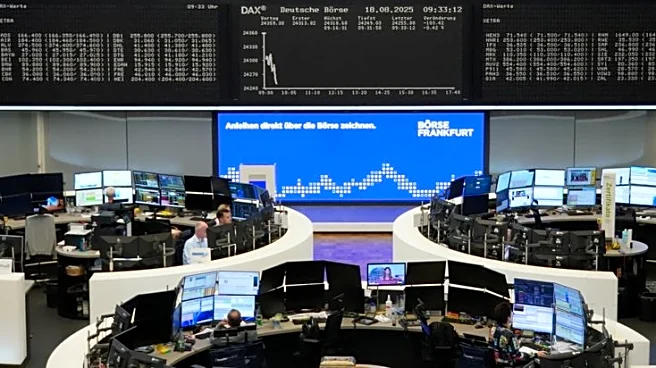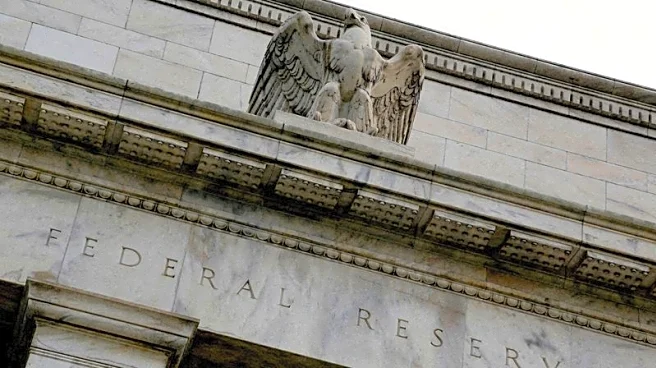What's Happening?
The U.S. Federal Reserve's decision to cut interest rates by a quarter of a percentage point has sparked a significant rally in European technology stocks. The pan-European STOXX 600 index rose by 0.79%, driven by a 4.1% surge in the technology sector, marking its largest single-day gain since April. This rally was led by semiconductor companies, with BE Semiconductor, ASML, and ASMI experiencing substantial increases in their stock prices. The Fed's rate cut, its first dovish move since December, aims to prevent further weakening in the labor market. The decision has been well-received by investors, who view it as a steady approach to monetary easing. Other European central banks, including Norway's, have followed suit with similar rate cuts, while the Bank of England maintained its interest rate at 4%.
Why It's Important?
The Federal Reserve's rate cut is significant as it reflects a shift towards easing monetary policy to support economic stability. This move is expected to influence global financial markets, particularly benefiting technology stocks, which are sensitive to interest rate changes. The rally in European technology stocks highlights the interconnectedness of global markets and the impact of U.S. monetary policy decisions on international economies. The rate cut may also provide relief to U.S. borrowers, potentially boosting consumer spending and stock prices. However, it underscores concerns about the labor market's health, prompting further cuts projected for October and December. The broader implications include potential shifts in investment strategies and economic forecasts, as stakeholders adjust to the new monetary landscape.
What's Next?
The Federal Reserve has indicated that further rate cuts are likely in the coming months, with meetings scheduled for October and December. This suggests a continued focus on supporting the labor market and mitigating economic risks. Investors and businesses will be closely monitoring these developments, as they could influence borrowing costs, investment decisions, and market dynamics. Additionally, the response from other central banks, such as Norway's recent rate cut, indicates a potential trend towards global monetary easing. Stakeholders will need to adapt to these changes, considering the implications for economic growth, inflation, and financial stability.
Beyond the Headlines
The rate cut by the Federal Reserve may have deeper implications for economic policy and market behavior. It reflects ongoing concerns about economic growth and labor market conditions, prompting a cautious approach to monetary policy. This decision could influence fiscal policy discussions, as governments consider complementary measures to support economic stability. Additionally, the rally in technology stocks highlights the sector's resilience and potential for growth, driven by innovation and investment. The interconnectedness of global markets underscores the importance of coordinated policy responses to address economic challenges.


